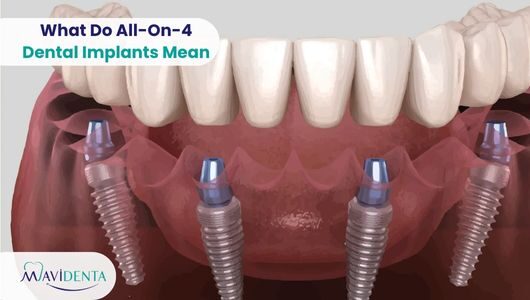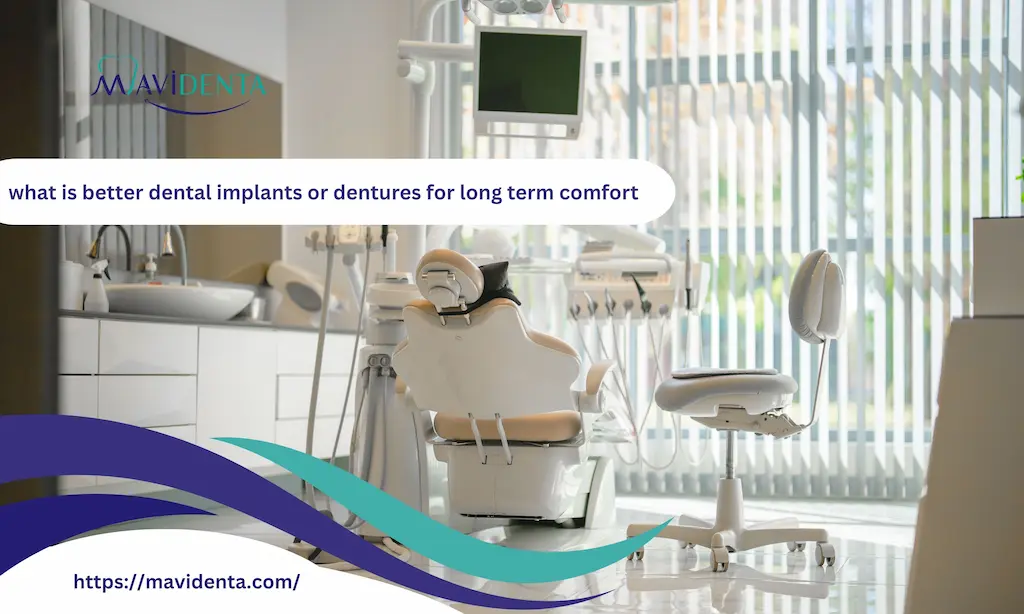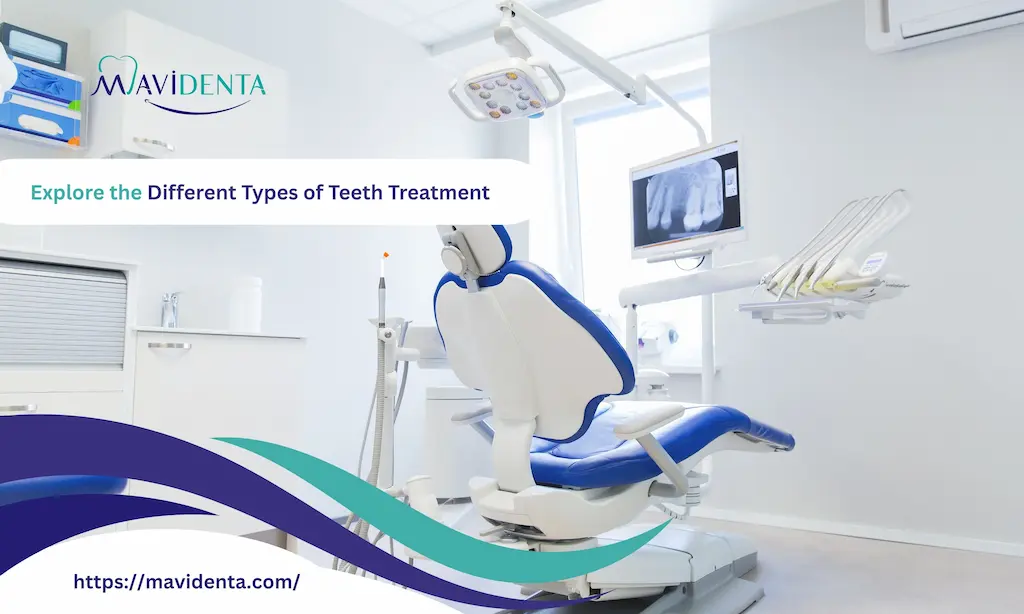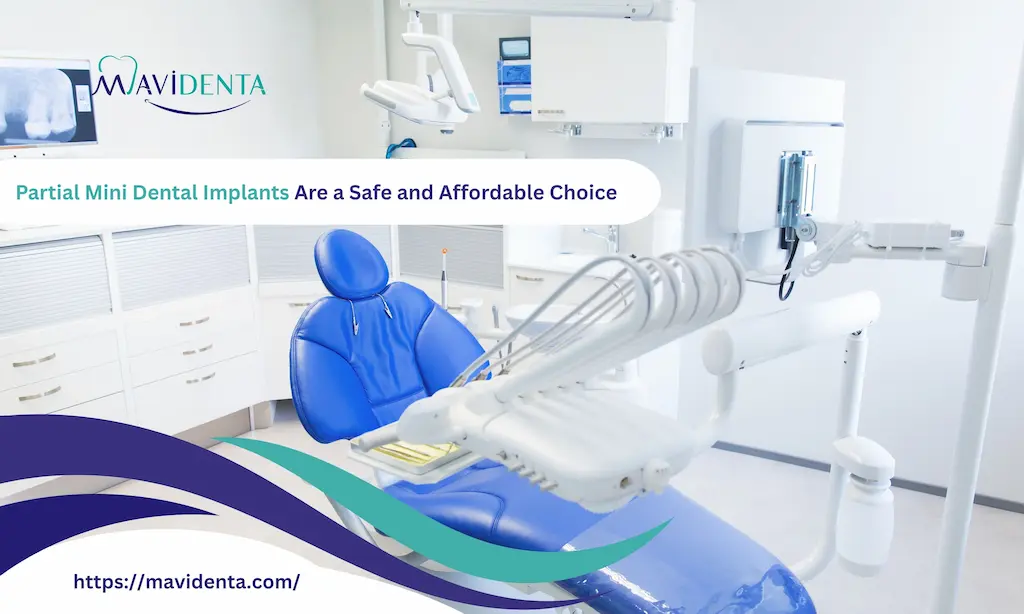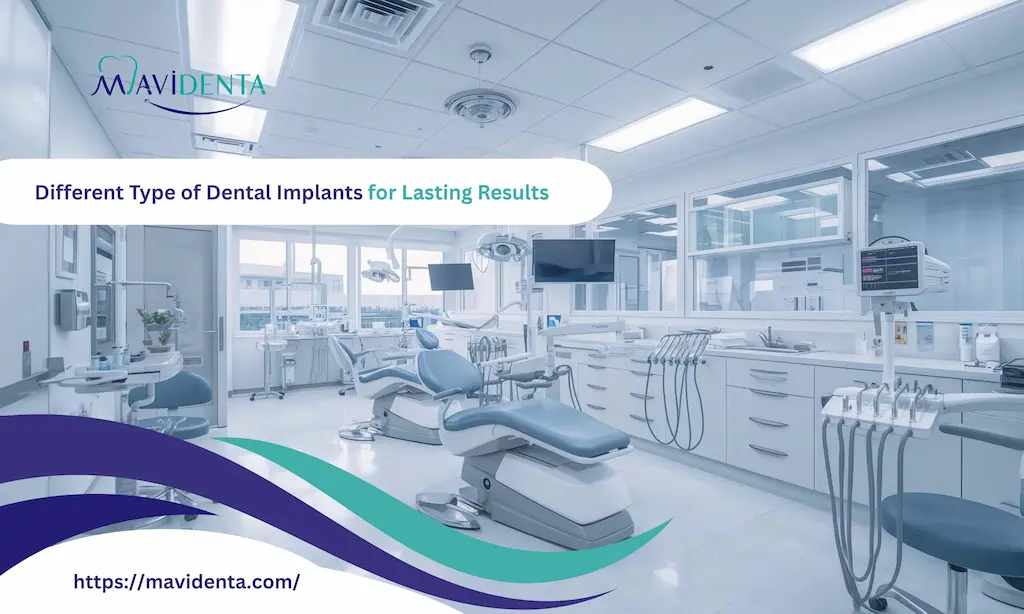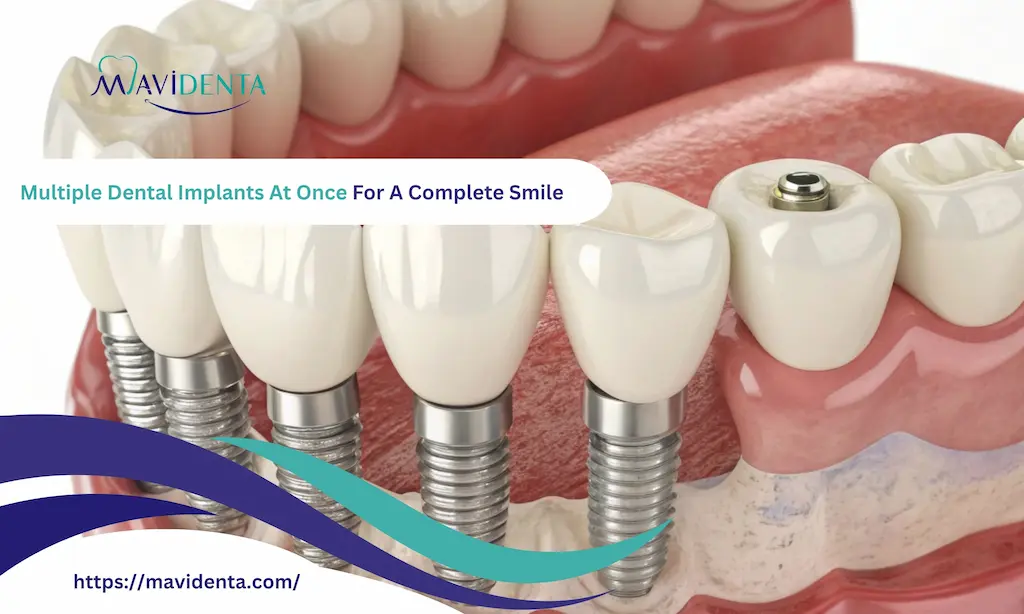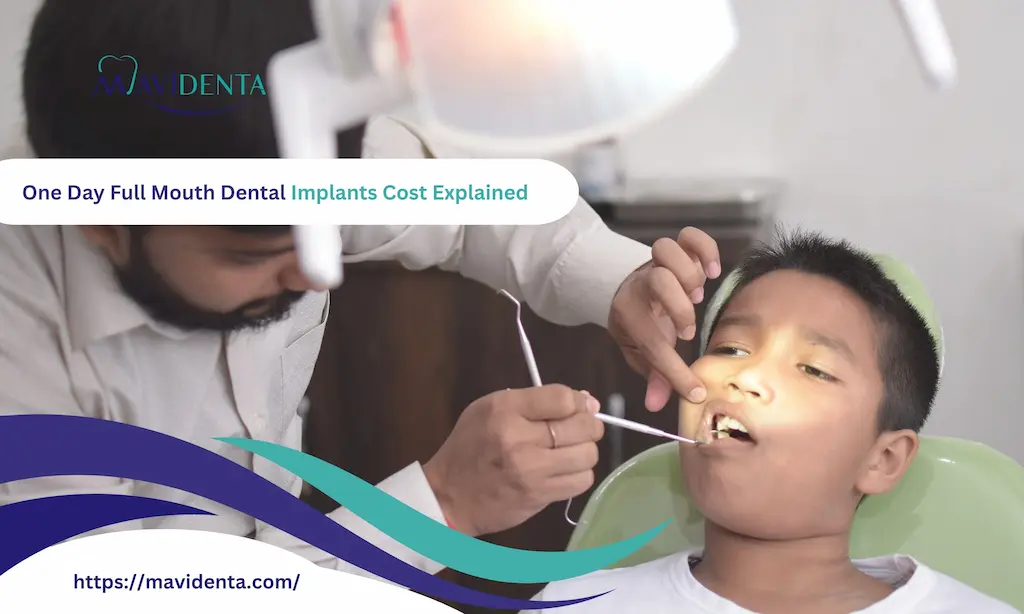If you’re considering restoring your smile with dental implants, you may have seen the term “All-on-4 dental implants.” This new concept in cosmetic and functional dentistry has become a popular choice for many people who have lost many or all of their teeth and are looking for a permanent and practical alternative to traditional dentures. In this article, we explain What do all-on-4 dental implants mean?Its associated benefits, and why it’s considered one of the most advanced and comfortable options for patients.
What Do All-on-4 Dental Implants Mean?
All-on-4 dental implants are a modern dental procedure that aims to replace a complete set of missing teeth using four implants in the jaw. This strategy is an effective and innovative solution for people who have lost a large number or all of their teeth. A full bridge of artificial teeth is placed on four metal implants in the patient’s jaw.
The posterior implants are angled to enhance stability and support, allowing for balanced pressure distribution when chewing. This means that the patient does not need an implant for each missing tooth, reducing the number of procedures, lowering costs, and speeding up the healing process.
This method is known as “teeth in a day” because the patient can leave the clinic the same day with new, stable teeth, without having to wait several months as with traditional implant methods.
So, what do all-on-4 dental implants mean? It’s a comprehensive, permanent solution that provides patients with a natural smile and excellent oral function using only four implants, making it a preferred choice for many people around the world.
Comprehensive guide to types of all on 4 dental implants.
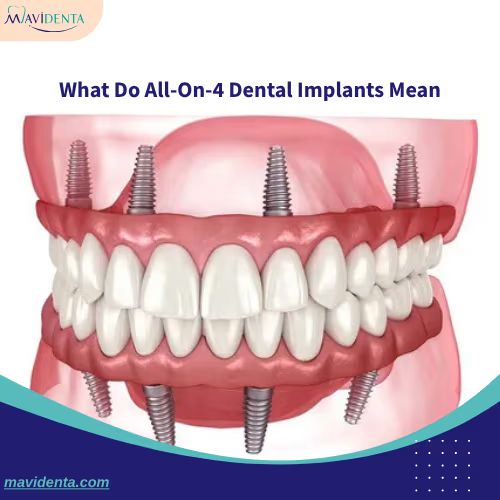
How Do All-on-4 Dental Implants Work?
The All-on-4 technique is based on a simple and effective concept. A full set of teeth is implanted using only four implants that are carefully inserted into the jawbone. These implants serve as strong supports to which the artificial teeth are permanently attached, providing the patient with a natural feel and aesthetic similar to natural teeth.
The anterior implants are placed vertically, while the posterior implants are placed at an angle of up to 45 degrees. This angle helps enhance stability, even if the patient has problems with jaw bone density. This clever idea, in many cases, avoids bone grafting.
After the implant procedure, a temporary dental bridge is often placed on the same day, allowing the patient to leave the clinic with new teeth. After a healing period, which typically lasts several months, the temporary bridge is replaced with a permanent one made of durable materials such as ceramic or zirconia.
All on 4 Dental Implants Temporary Teeth Explained.
All-on-4 Dental Implants Explained: Procedure, Benefits, and Ideal Candidates:-
The All-on-4 dental implant technique is one of the latest and most important developments in cosmetic and restorative dentistry, offering a revolutionary solution for people who have lost a large number of teeth or suffer from complete tooth loss in one or both jaws. This technique relies on anchoring a full row of artificial teeth onto just four implants, providing impressive results in terms of stability, aesthetics, and speed of completion.
How are All-on-4 implants performed?
The procedure is performed in organized stages, including the following:
Digital Examination and Planning:
It begins with a comprehensive oral examination using 3D CBCT imaging to assess the condition of the jawbone and determine the best locations for implant placement. This precise planning helps avoid the need for bone grafting in most cases.
Surgical Implantation:
The doctor implants four metal implants (usually titanium) into the jawbone. Two are positioned straight at the front of the jaw, while the other two are positioned at an angle at the back to provide maximum stability.
Temporary Dental Implantation:
In many cases, a temporary dental bridge is placed on the same day, allowing the patient to leave the clinic with permanent teeth that immediately appear natural.
Healing:
Over the following months, the implants fuse with the bone (a process called osseointegration), after which the temporary bridge is replaced with a permanent one made of high-quality materials such as ceramic or zirconia.
What are the benefits of All-on-4 dental implants?
The All-on-4 technique offers several advantages over traditional implants or removable dentures, the most notable of which are:
- Fewer implants: Only four implants are needed to support a full row of teeth.
- Fast results: Temporary teeth can be fitted on the same day.
- Lower cost: Because fewer implants are required, overall costs are lower.
- No bone grafting is required in most cases, thanks to the carefully considered angle of the implant.
- High comfort and stability: Teeth do not shift or fall out as with traditional dentures.
- Improved overall facial appearance: Restores fullness to the jaws and cheeks.
- Improved quality of life: Restores the ability to chew and speak with confidence.
Who are the ideal candidates for the All-on-4 technique?
This technique is not suitable for everyone, but there are certain groups that are ideal for it:
- People who have lost most or all of their teeth.
- People with severe tooth damage that is difficult to restore.
- People who wear removable dentures and are dissatisfied with their condition.
- Those with sufficient bone density (however, the technique can be performed even in cases of limited bone density due to the implant angle).
- Non-smokers or those who can abstain from smoking during the recovery period.
- Those in good general health and without uncontrolled chronic diseases such as diabetes or osteoporosis.
All on four dental implants cleaning steps and care guide.
Who Is a Good Candidate for All-on-4 Dental Implants?
The All-on-4 technique isn’t suitable for everyone, but it’s the ideal option for specific patient groups who meet certain criteria. Here’s the info:
Individuals who have lost most or all of their teeth:
If you have a significant number of missing teeth in your upper or lower jaw, or both, you’re a good candidate for the All-on-4 technique, as it allows for the replacement of all missing teeth using just four implants.
Dissatisfied Denture Users:
Many individuals who rely on removable dentures face difficulties such as denture slippage, difficulty chewing properly, or difficulty speaking. The All-on-4 technique offers a permanent alternative that offers greater comfort and stability.
Individuals with low jawbone density:
Unlike traditional implants, which may require bone grafting, All-on-4 implants allow implants to be placed at an angle, making them suitable for use even with partial bone loss.
Those in good general health:
The patient must be free of uncontrolled chronic diseases such as uncontrolled diabetes, complex heart disease, or osteoporosis. The patient must also be able to undergo oral surgery and recover successfully.
Non-smokers or those who can quit:
Smoking negatively impacts bone healing and reduces the chances of successful implant surgery. Therefore, it is preferable for the patient to be a non-smoker, or at least committed to abstaining from smoking during the recovery period.
Those with realistic expectations:
It is important for the patient to understand that the final result requires several steps and takes time to complete, and that temporary teeth are not the final result. Patience and realism are two of the most important qualities required in the ideal patient.
All on 4 Dental Implants Breaking Repair and Care Guide.
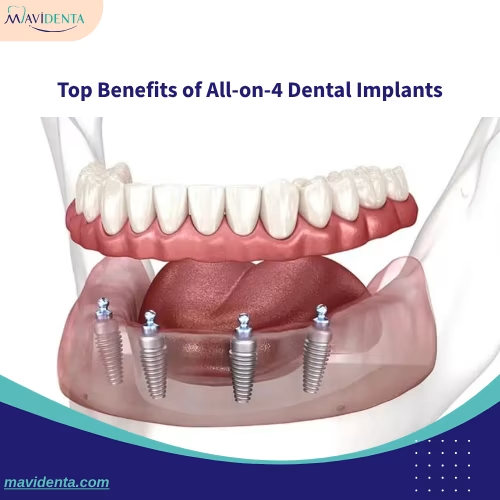
Top Benefits of All-on-4 Dental Implants:-
The All-on-4 technique is a significant advancement in the field of dental implants, providing patients with a permanent and stable solution to restore a full set of teeth using only four implants in each jaw. This modern method not only improves the appearance and shape of the implant but also offers functional, psychological, and financial benefits. Here are the key features that make this technique ideal for many patients:
Rapid Smile and Oral Function Restoration:
One of the most notable advantages of All-on-4 is that patients can leave the clinic the same day with permanent, functional, temporary teeth. This means patients can immediately regain their ability to eat, speak, and smile, without having to wait several months as with traditional methods.
Fewer Implants:
The All-on-4 technique uses only four implants per jaw, while traditional implants may require six to eight. This reduces the number of surgeries, shortens treatment times, and significantly lowers costs.
No Need for Bone Grafting in Most Cases:
Many patients do not have sufficient bone density to receive traditional dental implants, requiring additional procedures such as bone grafting. With the All-on-4 technique, the posterior implants are placed at an angle that takes advantage of the available bone, eliminating the need for grafting in most cases.
High Stability and Comfort:
Unlike removable dentures that can slip or cause problems, All-on-4s provide high stability that mimics natural teeth, allowing patients to chew, speak, and laugh with confidence and without stress.
Enhance the Overall Facial Appearance:
Tooth loss affects facial features, particularly in the jaw and cheek area. The replacement of permanent teeth restores facial fullness and gives the face a more youthful and healthy appearance, enhancing natural attractiveness and self-confidence.
Long-lasting, permanent solution:
If properly cared for, All-on-4 implants can last for many years. They are designed to be a permanent solution for missing teeth, providing patients with long-term psychological and economic comfort without the need for frequent replacements.
Enhance Overall Oral Health:
Dental implants help maintain healthy jawbones and prevent erosion. They also facilitate better oral and gum hygiene compared to removable dentures, reducing the risk of chronic gum disease or infections.
Natural and Aesthetic Results:
The teeth implanted using this technique are custom-designed to match the patient’s facial shape, skin tone, and smile. This result is so natural that it is virtually indistinguishable from the original teeth.
Pros and cons of all on four dental implants explained.
Downsides of All-on-4 Dental Implants: What You Should Know:-
Although all-on-4 dental implants are considered a modern and effective solution for replacing missing teeth, like all medical procedures, they carry some drawbacks or challenges that should be considered before making a decision. Being aware of the potential downsides can help you make an informed decision and prepare for any complications that may arise.
Not Suitable for Everyone:
Not everyone is a good candidate for all-on-4 implants. Individuals with significant jaw bone deterioration, chronic immune diseases, or complex health conditions may not be good candidates for this technique. In such cases, additional procedures or alternative options may be required.
Risk of Failure:
Although the All-on-4 success rate is high, there is a small possibility of implant failure, whether due to the implant not bonding to the bone, infection, or the body’s rejection of the implant. If failure occurs, the implants may need to be removed and treatment restarted.
Difficulty with Later Adjustments:
When permanent teeth are placed on only four implants, any problem with one of them can affect the overall stability of the bridge attached to it. This means that modifying the design or repairing damage may be more difficult than implanting each tooth individually.
High Initial Costs:
Although the cost of all-on-4 implants is lower than implanting each tooth individually, they are still considered higher than dentures or some partial implant options, especially in certain countries. These costs may represent a financial obstacle for some patients.
Discomfort During Recovery:
After the procedure, the patient may experience pain or swelling or have difficulty eating for several days. The healing and osseointegration period can take 3 to 6 months, requiring the patient to adhere to certain instructions and follow a special diet.
Temporary Teeth Are Not Permanent:
In most cases, a temporary bridge is placed immediately after the implants are placed and replaced with a permanent bridge after the implants have healed. A temporary bridge may not be as durable and aesthetically pleasing as a final bridge, and may require additional maintenance during this period.
Reliance on Only Four Implants:
Unlike traditional implants, which distribute teeth across a larger number of implants, the All-on-4 technique relies on only four. This places significant stress on these implants, which can lead to long-term problems in cases of heavy use or if problems arise with one of them.
Explore the All on-4 Dental Implants Gum Disease Treatment.
How Many Teeth Do You Get with All-on-4 Dental Implants?
When choosing the All-on-4 dental implant technique, the patient is typically given a full row of fixed teeth, ranging from 10 to 14 artificial teeth in each jaw, depending on the design and material used. These teeth are placed on top of four metal implants carefully positioned in the jawbone, providing the bridge with the necessary stability and support.
The artificial teeth are meticulously crafted to cover the entire jaw from canine to canine, giving the patient a natural appearance and good oral function for chewing and speaking. Although only four implants are placed in each jaw, the number of teeth retained is sufficient for effective daily activities without the need for individual implants.
This option is ideal for people who have lost all their teeth in one or both jaws and want to restore their smile in a permanent and effective way without the use of conventional dentures. Using the All-on-4 technique, the patient receives a suitable number of teeth, along with a stable, natural smile that feels comfortable.
How Long Do All-on-4 Dental Implants Last?
All-on-4 dental implants are a sustainable solution for restoring missing teeth, designed to last for many years and possibly a lifetime in many cases. Metal implants, often made of titanium, are inserted into the jawbone and have the ability to fuse with the bone over time.
These implants are highly resistant to wear and tear and can remain effective for 20 to 25 years or more if properly cared for. While a bridge or dental implant may need to be replaced or adjusted after 10 to 15 years, depending on the quality of the material and the method of use.
The longevity of an All-on-4 implant depends on a number of factors, including daily oral health care, regular dental visits, and avoiding bad habits such as smoking or using your teeth to do things like break hard materials. Proper nutrition and dental hygiene also have a significant impact on the long-term maintenance of the results.
All on 4 Dental Implants Cost Overseas Savings Guide.
All-on-4 vs. All-on-6 Dental Implants: Which Is Better?
When people consider restoring a full set of missing teeth, questions arise about the difference between the All-on-4 and All-on-6 techniques, as well as which option is best. In fact, both methods offer effective and long-lasting solutions for tooth replacement, but the decision between them depends on several factors related to the patient’s situation and needs.
In the All-on-4 technique, the complete denture is secured with only four implants placed in specific locations in the jaw, making it suitable for people with bone loss or who do not wish to undergo bone grafting surgery. This method is typically less expensive and takes less time to perform, and patients can often leave the clinic with fixed temporary teeth the same day.
In contrast, the All-on-6 technique uses six implants instead of four, which contributes to better weight distribution and enhanced bridge stability. This method is better for people with good bone density, as it improves their chewing ability and increases the strength of the implants, especially in the long term.
In general, All-on-6 is stronger and more stable, but it requires specific bone conditions and may be more expensive. While All-on-4 is a flexible and effective option for many patients, especially those looking for a quick solution with minimal surgical intervention.
All-on-4 vs. Traditional Dental Implants: Key Differences:-
When considering replacing missing teeth, patients have several options, including the All-on-4 technique and traditional dental implants. Although both methods aim to permanently restore teeth and improve appearance and function, there are distinct differences between them regarding the number of implants, treatment duration, cost, and procedures required.
With traditional dental implants, each missing tooth requires a separate implant, meaning that a person who has lost all their teeth may require 8 to 10 or more implants per jaw. This requires higher bone density, longer healing times, and greater expense. Patients often require additional procedures such as bone grafting or sinus lifts to ensure adequate support for the implants.
On the other hand, the All-on-4 technique places only four implants in each jaw, positioned at carefully calibrated and stable angles to support a full set of teeth. This technique reduces the number of surgeries and eliminates the need for bone grafting. It also allows for the placement of temporary teeth on the same day, making it a faster and less expensive option compared to traditional dental implants.
In terms of stability and strength, both techniques provide excellent results, but traditional implants may offer better strength distribution due to the larger number of implants. On the other hand, the All-on-4 technique offers patients with weak bone or those seeking a quick and effective solution the opportunity to restore their smile without the need for complex procedures.
All on 4 dental implants vs snap in dentures full comparison.
Average Cost of All-on-4 Dental Implants in 2025:-
Turkey is a leading destination for cosmetic dentistry, especially when considering the All-on-4 dental implant technique. The country attracts many patients from Europe, the Middle East, and America annually due to its combination of high quality and affordable prices. In 2025, Turkey continues to be a preferred choice for those seeking comprehensive dental implants at competitive prices.
The cost of All-on-4 dental implants in Türkiye ranges between €3,500 and €7,000 per tooth per jaw. This depends on a number of factors, such as the experience of the dentist, the level of the clinic or medical center, the city where the procedure is performed, the type of implant materials used, and the final tooth design, such as zirconia, acrylic, or ceramic.
Compared to countries like Germany, the United Kingdom, and the United States, where costs can reach over $20,000 per jaw, dental implant prices in Turkey are very reasonable without compromising on quality. Furthermore, many clinics offer all-inclusive treatment packages that include hotel accommodation, airport transportation, translation, and post-operative checkups, making the patient experience comfortable and complete.
However, it is important for patients to realize that a lower price does not always mean a lack of quality. The clinic should be carefully selected, its accreditation ensured, and previous patients’ experiences reviewed. The success of dental implants depends largely on the skills of the medical team and careful planning.
All on 4 Dental Implants Cost with Insurance Explained.
Why Get Dental Treatment in Turkey?
In recent years, Turkey has become one of the world’s leading destinations for dental treatment, particularly for patients coming from Europe, the Middle East, and Asia. This is not only due to the reasonable prices, but also the high quality provided by Turkish clinics, utilizing the latest technologies and the best doctors. Therefore, dental treatment in Turkey combines professionalism, speed, and affordability, making it the ideal choice for patients seeking excellent results without spending a lot of money.
One of the important reasons patients choose Turkey is its lower costs compared to European and Gulf countries. Patients can save up to 70% of the total cost while maintaining a high level of quality. Additionally, many clinics offer all-inclusive options that include treatment costs, luxury hotel accommodation, transportation, and even translation services, facilitating a comfortable and convenient treatment experience.
Turkish clinics feature modern medical equipment and operate according to internationally recognized quality standards. Doctors in Turkey have extensive international experience, many of whom received training in both Europe and America. They speak fluent English, making it easy to communicate with patients from abroad.
Furthermore, Turkey offers a comprehensive experience; patients can combine treatment with relaxation in a country with beautiful terrain and a rich cultural history, with prices to suit all budgets. Whether you need teeth whitening, dental implants, orthodontics, or a smile makeover, you’ll find a variety of options in Turkey to meet all your needs.
Why Choose Mavidenta: Top Dental Clinic in Turkey for Implants?
When considering dental implants, choosing the right clinic is more than just a medical step; it’s an investment in your smile, your confidence, and your quality of life. With so many clinics in Turkey, Mavidenta stands out as a leading choice in this field, renowned for its high level of professionalism, commitment to quality, and the desire of thousands of patients from around the world to seek its services.
Mavidenta is more than a health center; it’s a comprehensive experience that aims to provide exceptional care in a comfortable, safe, and modern environment. The clinic prides itself on utilizing the latest dental implant technologies, such as the All-on-4 and All-on-6 systems, and uses 3D imaging and precise digital models to ensure optimal results from the first visit.
What truly sets Mavidenta apart is its medical staff, comprised of specialized dentists educated at top European universities who speak fluent English, facilitating communication and enhancing the comfort of international patients. The clinic’s doctors not only care about medical aspects but also strive to achieve aesthetic and practical details to achieve a natural, harmonious smile that lasts for years.
In addition to medical expertise, Mavidenta offers comprehensive treatment packages that include everything from airport pickup, luxury hotel accommodations, and transportation and translation services, making your visit comfortable and stress-free. It also provides ongoing follow-up care after the procedure, even after the patient returns home.
The clinic’s prices are highly competitive for the quality it provides. While Mavidenta maintains world-class standards of care, its costs remain significantly lower than those in Europe and America, giving patients the opportunity to achieve the best results at an affordable cost.
How to Choose the Best Dental Implant Clinic in Istanbul?
Conclusion
Now that you know what all-on-4 dental implants mean? You can make an informed decision about the right solutions to restore your smile. This treatment not only provides you with a natural and elegant appearance but also enhances your quality of life and self-confidence. If you’re looking for a permanent and effective solution to replace missing teeth, the All-on-4 procedure is an option worth considering.
FAQS
What does an All-on-4 dental implant mean?
It refers to the use of only four implants to support a full set of teeth in one jaw, providing stability and strength for the new teeth without the need for implants for each missing tooth.
What is the difference between traditional and All-on-4 dental implants?
Traditional implants require an implant for each tooth, while the All-on-4 procedure relies on four implants to support a full row of teeth, saving costs and time.
Is the All-on-4 system suitable for all patients?
It is most likely suitable for people who have lost most or all of their teeth, but the doctor needs to assess bone density and gum health before confirming the possibility of the procedure.
How long does it take to recover after the All-on-4 procedure?
Initial recovery typically takes several days to a week, but full healing and bone recovery can take several months.
How long do All-on-4 implants last?
With proper care, All-on-4 implants can last for decades and are a long-term investment in your oral health and overall appearance.

